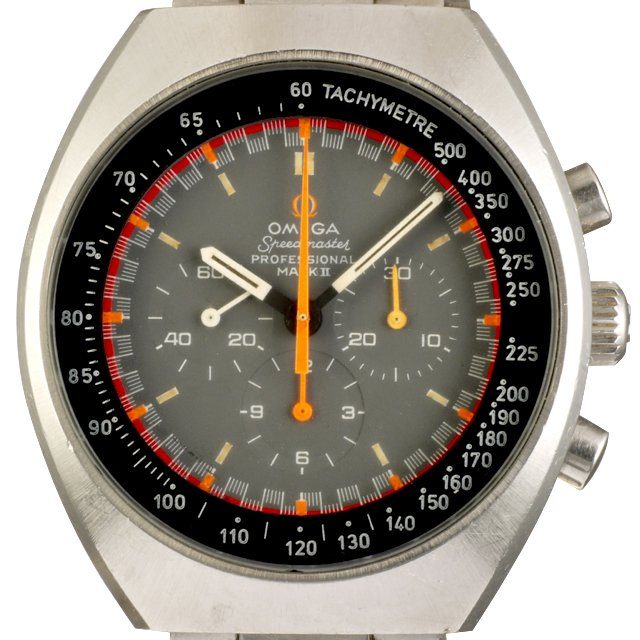
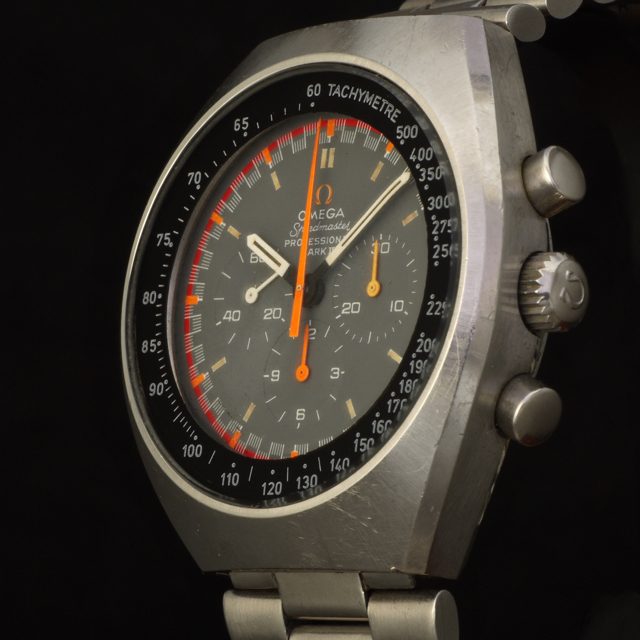
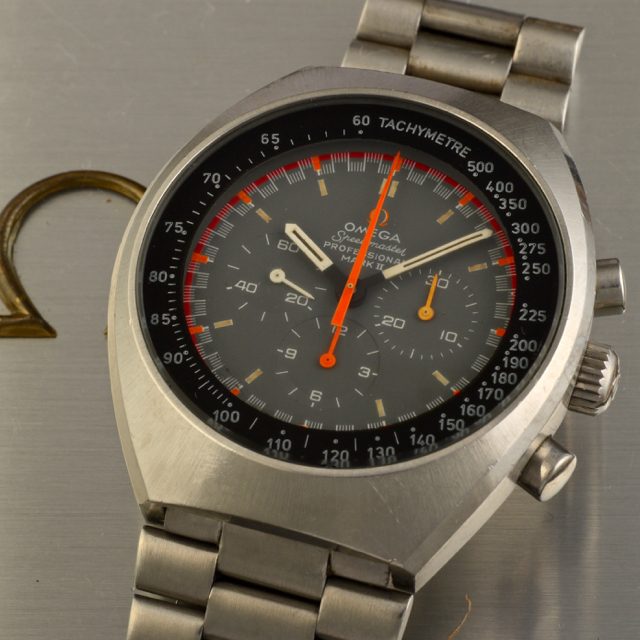
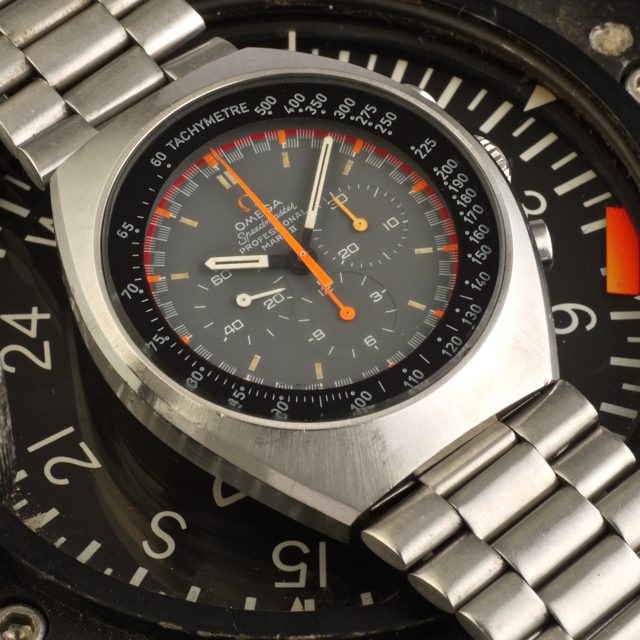
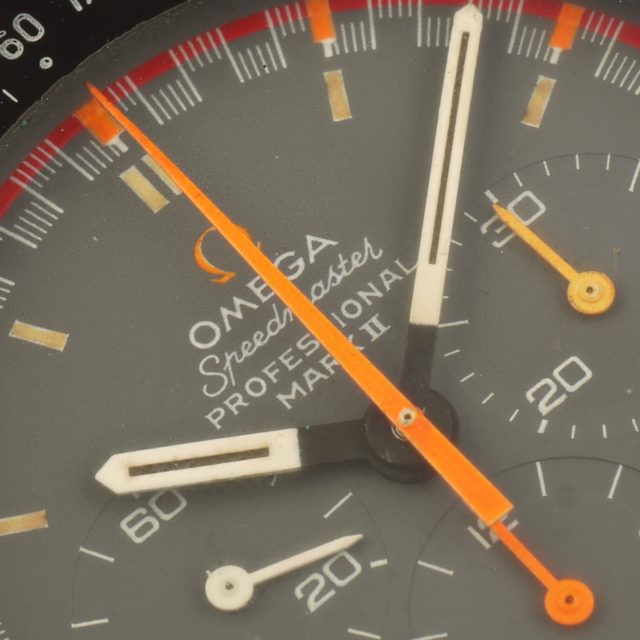
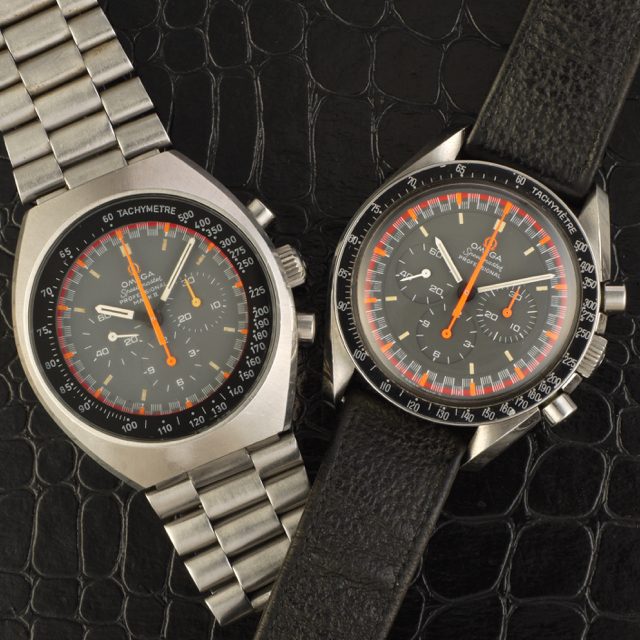
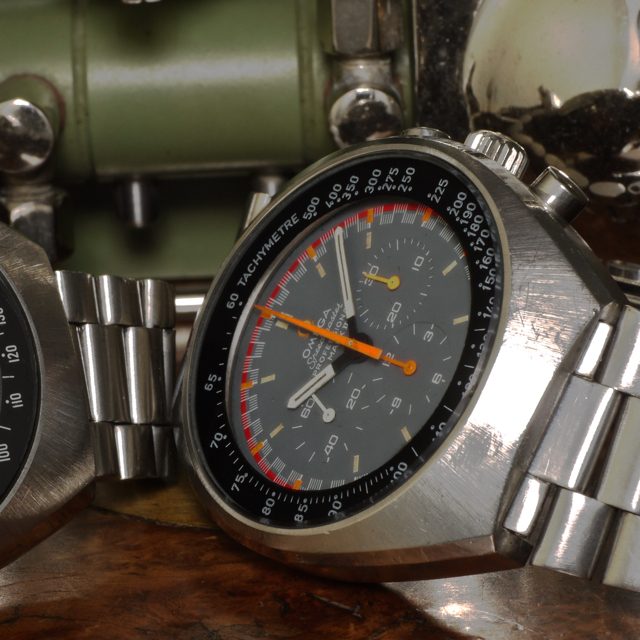
Omega Speedmaster Mark II
Bar codes are introduced for retail and industrial use in England1970 Omega Speedmaster Mark II ref. ST145.014 rare racing dial.
The Speedmaster Professional Mark II was introduced in 1969. The shape of the 45mm x 41mm case is seen nowadays as typical of the 1970s style, but the Mark II was one of the first watches to use that shape; other examples belonged to the automatic generation of Heuer Autavia.
It was supposedly intended as an eventual replacement for the Moonwatch case, but the Apollo program had very tight schedules and the approval from the Test Division would have taken too much time for NASA.
The Speedmaster Mark Series consists of four distinct Marks. The first Mark, which is almost never referred to as the Mark I, is the original Omega Speedmaster Professional commonly referred to as the Moonwatch cal. 861.
Omega was founded in 1848 by Louis Brandt at the age of 23. The brand’s reputation grew fast and in 1895 the watches achieved a precision of 30 seconds a day.
By the turn of the 19th century Omega was one of Switzerland’s largest watch companies with 240,000 watches produced annually and employing 800 people.
Omega made its debut in sports during the Gordon Bennett international ballooning Cup in 1917; since then Omega has gone on to be the official timekeeper at 21 Olympic Games.
In 1936 Omega set the remarkable World precision record of 97.8 points at the Kew-Teddington observatory in England.
In 1957, with motorsport in mind, Omega launched the Speedmaster, which in 1965 was chosen by NASA as its official chronometer in Space. Four years later the Moonwatch was the first watch to be worn on the Moon, when on 21st July 1969 Neil Armstrong made his giant leap for mankind. Currently Omega belongs to the Swatch Group.
